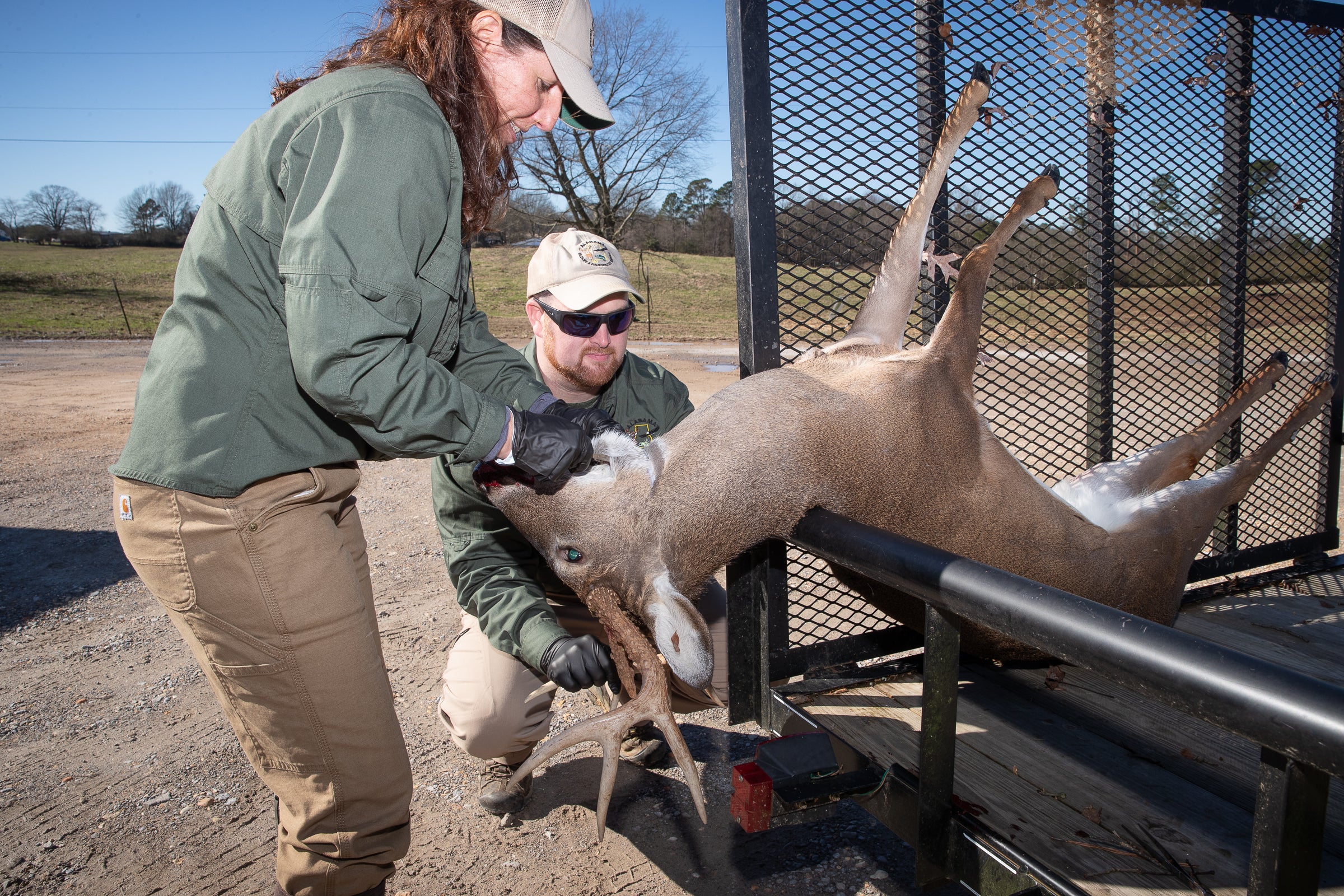By DAVID RAINER, Alabama Department of Conservation and Natural Resources
With positive tests for chronic wasting disease (CWD) in Tennessee and additional positives in Mississippi, the Alabama Wildlife and Freshwater Fisheries (WFF) Division has ramped up testing in north Alabama.
WFF officials set up manned sampling stations in Hackleburg the first weekend of the new year and followed with sampling last weekend in Waterloo.
Self-service sampling stations were recently set up by WFF in north Alabama to accommodate drop-offs 24 hours a day.
WFF Director Chuck Sykes said testing for the always-fatal disease, which is caused by a rogue protein called a prion, has been ongoing since 2002, but the positive tests in neighboring states caused WFF to increase its sampling effort.
“The Mississippi positives made us test more in the areas that joined Mississippi,” Sykes said. “When the deer in Tennessee tested positive, it prompted an increased level of testing where it fell within the response zone. Those positives just prompted us to increase our surveillance in those areas.”
Sixteen deer were brought in for sampling at the Hackleburg station, but Sykes said the interaction with hunters who didn’t harvest deer may have been the most productive aspect of the manned sampling station.
“We didn’t know what to expect, but I consider it a success for a volunteer check station,” Sykes said. “More important than the 16 deer brought in, we had two times that many hunters stop by and ask questions.
“It was a really good way for our staff to get in front of the public, and the public to be able to ask questions one-on-one.”
Sykes and the WFF staff discovered that, although the Division has been immersed in the CWD Response Plan, it has yet to be widely discussed in the public.
“We (WFF) are up to our eyeballs in CWD,” Sykes said. “Even though we’ve offered seminars, done articles and put up billboards, a lot of people don’t pay attention until it hits close to home. A lot of the questions were just basic CWD knowledge that the average hunter in Alabama doesn’t understand. What is it? Why is it a problem? What makes it different from other diseases?
“These were very positive interactions. There was nothing negative about it.”
Sykes said the self-service sampling stations are part of the standard protocols of the CWD Response Plan (https://www.outdooralabama.com/deer-hunting-alabama/chronic-wasting-disease-what-you-should-know).








